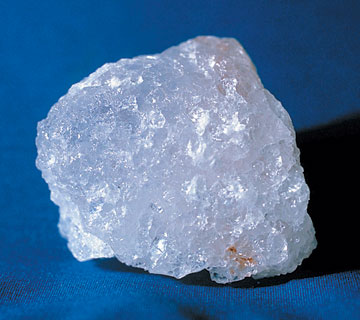
Shaving Salt From
Your Diet
“Food should be prepared in as simple a manner as possible, free from condiments and spices, and even from an undue amount of salt.” Counsels on Diet and Foods, 340.
We consume sodium every single day, and that’s a good thing! Our bodies need sodium to help maintain water and mineral balances and blood volume. But too much of a good thing (sodium in this case) can have negative effects on our health. The amount of salt we ingest has a direct effect on our blood pressure. Salt makes our body retain water, which increases the volume of our blood, which increases the pressure in our veins and arteries. High sodium intake also contributes to osteoporosis, kidney disease, asthma, and is even closely related to some cancers.
Sodium is a mineral that occurs naturally in foods that you eat every day. Salt and sodium are not the same things—but salt is made from sodium (and chloride). While most of us get enough sodium each day to meet our body’s needs, the average person consumes way too much! You might be surprised to learn that Americans consume three to four teaspoons of salt per day. That is twenty times more than is actually needed! Experts recommend that adults consume less than 2,300 milligrams of sodium daily—that’s about one teaspoon of salt.
It’s not just the salt we shake on our food that’s the problem. Most comes from fast and processed foods. It’s hidden in products we might not even suspect such as peanut butter, canned vegetables, crackers, chips, breads, bakery products, soy sauce, many beverages, and even toothpaste.
Here are ways you can cut back on sodium:
Use fresh fruit and vegetables instead of packaged or processed foods.
Replace the salt shaker with fresh herbs for seasoning your foods.
Don’t add salt to boiling water when cooking pasta, vegetables, or rice.
Drain and rinse canned foods before serving or adding to recipes. Buy canned goods with “No salt added” on the label.
Select brown rice instead of flavored rice or any that comes with a packet of powdered seasoning.
Use salt substitutes wisely. Some salt substitutes or light salts contain a mixture of table salt and other compounds. To achieve that familiar salty taste, you may use too much of the substitute—and get too much sodium.
Your taste for salt is acquired, so you can learn to enjoy less. Decrease your use of salt gradually and your taste buds will adjust. After a few weeks of cutting back on salt, you probably won’t miss it, and some foods may even taste too salty. Start by using no more than 1/4 teaspoon of salt daily—at the table and in cooking. Then throw away the salt shaker. As you use less salt, your preference for it diminishes, allowing you to enjoy the taste of the food itself, with heart-healthy benefits.
Anna Schultz